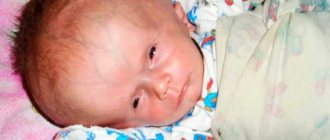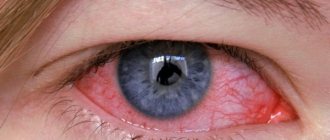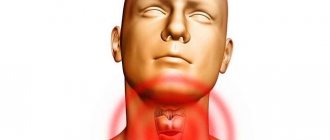Etiology
Since there are hereditary, congenital and acquired hearing loss, each type of pathology will have its own underlying factors.
For example, the first variant of the disease is transmitted from parents to child. Most often this is carried out according to the autosomal recessive type, less often - according to the dominant one. In such situations, children experience irreversible, but not prone to progression, changes in the hearing organs. In approximately 80% of cases, the hereditary variant is isolated, and in other cases it forms the clinical picture of other genetic syndromes. Today, clinicians know more than 400 diseases that include such a deviation, in particular, Down syndrome, Patau and Klippel-Feil.
Also often the reasons are:
- the expectant mother's addiction to alcoholic beverages;
- indiscriminate use of medications;
- specific working conditions for pregnant women;
- intracranial injuries in a child received during labor;
- fetal asphyxia;
- hemolytic syndrome;
- congenital malformations of the hearing organs.
Another risk factor is prematurity, with the baby weighing less than 1.5 kilograms at birth.
Not least important are drug overdoses, the individual reaction of a child’s body to vaccinations, as well as the habit of teenage children listening to excessively loud music.
Description
Grade 1 hearing loss is the initial stage of the disease. The disease has not yet reached full force, and absolute deafness is still far away. In general, if a diagnosis of “1st degree hearing loss” is made, this means that the disease is completely reversible. But it is necessary to urgently begin treatment to return hearing to normal.
In scientific terms, hearing loss is a persistent impairment of the body’s auditory activity, which is manifested by a sharp or gradual deterioration in the perception of sounds. The disease itself is caused by the fact that the auditory nerves become unusable. The degree of hearing loss depends on how many nerves are affected. In the first degree, the process of hearing loss is in the initial stage.
Hearing loss is dangerous not only in itself, it also affects the fact that a person’s speech begins to deteriorate. In addition, hearing loss causes severe discomfort because a person constantly or periodically hears unpleasant noise in the ears.
Most often, the disease affects older people due to age-related changes. As a result of natural aging, the nerve endings of the cochlea gradually atrophy in people. As a result, this can lead to complete and irreversible hearing loss. In this case, people have to use a hearing aid.
It should be noted that the process of development of hearing loss is irreversible. That is, if hearing loss begins, it will continue until the person becomes completely deaf. However, this will only happen if treatment measures are not taken in time. Fortunately, at the first stage of the development of the disease, it can still be easily stopped, and even hearing can be completely restored.
The first degree of hearing loss is characterized by the fact that a person hears only sounds pronounced 3-5 meters away from himself. What happens beyond this distance is difficult for him to distinguish, often just as background noise.
Classification of hearing impairment
Profound hearing loss can either develop gradually with age or manifest itself abruptly: due to complications after infectious or other diseases, trauma or other causes. For the majority, the decrease in the hearing threshold occurs slowly, when the patient does not immediately realize what is happening to him. Therefore, it may take 7-10 years from the appearance of the first symptoms to seeing a doctor. Late treatment significantly reduces the chances of successful treatment and return to a normal lifestyle.
Hearing loss is classified:
- type;
- by time of manifestation;
- localization – unilateral or bilateral;
- symmetry;
- rate of progression;
- degree of loss of function.
Depending on the time of manifestation, there can be acquired or congenital pathologies. The disease can manifest itself abruptly - for example, after an injury or taking drugs, then it is characterized as sudden. If hearing decreases over time, it is classified as progressive hearing loss. Identical manifestations of hearing loss on both ears indicate symmetrical hearing loss, while different manifestations indicate asymmetrical hearing loss.
Classification of types and degrees of hearing loss
The pathology can affect one or both ears and manifest itself differently in different ears. Hearing loss is explained by a malfunction of the sound-conducting (middle and outer ear) or sound-receiving apparatus (inner ear and brain). Sometimes deviations are associated with a disruption in the functioning of both structures.
When diagnosing pathology, the location of the disorder, the degree of hearing damage and the time during which hearing loss develops are taken into account. Depending on the location of damage to the auditory analyzer, 3 types of pathology are distinguished.
Conductive hearing loss. Damage affects the outer ear, eardrum, and middle ear. The cause may be a plug of sulfur, improper development of the hearing aid, tumors, or otitis media.
Sensorineural (sensorineural) hearing loss. Disturbances are localized in the area of the inner ear when the auditory nerve, the central part of the hearing aid, is damaged. Hearing loss occurs as a result of disruption of the sound-receiving parts of the ear.
Mixed hearing loss. Simultaneous impairment of sound-conducting and sound-perceiving functions. In this case, the child may hear ringing in the ears, hissing, humming, and experience difficulty perceiving speech in a noisy environment.
Most cases of childhood hearing loss are sensorineural, less than 10% are conductive, and a very small percentage are mixed.
Based on the time of occurrence, hearing loss is divided into sudden, acute and chronic.
Sudden hearing loss. It occurs unexpectedly, most often in the morning upon awakening, in a generally normal state. Characterized by tinnitus or congestion. It can appear in one, less often in both ears at the same time.
Sudden hearing loss occurs more often in the morning upon waking up.
Acute hearing loss. Significant hearing impairment lasting no more than a month. It begins with ear congestion or noise, but not loss of function. These manifestations may be unstable, appearing and disappearing from time to time. It is worth paying attention to them, since such symptoms are harbingers of incipient deafness.
Manifestations of acute hearing loss are variable
Chronic hearing loss. It begins with a gradual deterioration in hearing and can progress over several months or years. It may stabilize at one level, or it may worsen.
Chronic hearing loss in children can last for many years
Degrees of hearing loss
Any type of hearing loss is characterized by varying degrees of pathology - from mild to complete deafness. Depending on the hearing threshold, there are 4 degrees of hearing loss.
1st degree. The hearing aid perfectly perceives sounds in the range of 26-40 dB. A person distinguishes words in ordinary conversation. In a noisy environment, the ability to hear the other person's speech is reduced. At a distance of more than 2 m, whispers are not perceived at all.
2nd degree. Difficulties in perceiving sounds in the range of 41-55 dB. The ability to hear in a noisy environment is sharply reduced; normal speech can be heard at a distance of no more than 4 meters, and whispers can be heard no further than 1 meter. The person is forced to ask his interlocutor again.
3rd degree. Characterized by immunity to sounds in the range of 56-70 dB. Without a special device, a person is not able to conduct normal communication. With such a degree of hearing loss, doctors prescribe disability.
4th degree – deafness. A person does not perceive sounds in the range of 71-90 dB. Whispers are inaudible at all, and ordinary speech is understandable at a distance of no more than 1 meter.
In addition to the existence of the above varieties of the disease, specialists from pediatric otolaryngology divide hearing impairment into several degrees of severity:
- 1st degree hearing loss (26-40 dB) - there are no problems with the perception of spoken speech from a distance of 4 to 6 meters, whispering - from 1 to 3 meters. However, the child is not able to distinguish speech spoken against a background of noise;
- hearing loss 2 degrees (41-55 dB) - in such situations, spoken speech can be heard only from 2-4 meters, whispering - from 1 meter;
- degree 3 hearing loss (56-70 dB) – it is possible to hear a normal conversation from a distance of 1-2 meters, and whispering is not audible at all;
- grade 4 hearing loss (71-90 dB) – characterized by the fact that children do not respond even to spoken speech.
It must be taken into account that complete deafness is considered to be an increase in the hearing threshold over 90 dB.
Based on the localization of the pathology in the ear canal area, it is customary to distinguish the following forms of the disease:
- sensorineural or sensorineural hearing loss – is formed against the background of impaired functioning of the sound-perceiving apparatus. This option occurs in 91% of patients;
- conductive hearing loss - develops due to damage to the sound-conducting system, which consists of the auditory ossicles, eardrum and outer ear. Prevalence is 7%;
- mixed hearing loss - problems are diagnosed not only with the conduction, but also with the perception of spoken sounds.
Sensorineural hearing loss in children
Depending on the time of development of hearing loss, hearing loss occurs:
- prelingual - occurs before the child learns to speak;
- postlingual - appears after the acquisition of speech skills.
Depending on the duration, such a disorder is divided into:
- sudden - occurs unexpectedly and progresses in just a few hours;
- acute – is such when no more than one month has passed since the hearing loss;
- subacute - in such cases the disease lasts more than 2 months;
- chronic – the patient has been ill for more than 3 months, the pathology cannot be treated, and there is no positive dynamics.
Sensorineural and conductive hearing loss
There are two types of the disease:
- Conductive hearing loss occurs due to some kind of obstruction that prevents the passage of sounds. This is a sulfur plug, a foreign body, otosclerosis, damage to the eardrum, otitis media or various tumor-like formations.
- Neurosensory is a type of disease in which the pain threshold decreases in the process of perceiving sounds that previously did not cause any discomfort. The causes are diseases of the auditory nerve, as well as autoimmune and infectious diseases. In rare cases, the disease develops due to prolonged use of antibiotics, loud noise and exposure to toxic substances.
There is also a mixed form, when there are signs of both types of hearing loss. Only specially selected hearing aids can cure this form.
Based on the severity of the symptoms of the disease, four degrees of the disease are distinguished:
- 1st degree is characterized by slight difficulties in recognizing the sounds and speech of interlocutors. Even this level is dangerous for small children.
- Grade 2 is characterized by more severe difficulties in recognizing sounds.
- 3rd degree is more severe. Patients have difficulty understanding speech and loud sounds. This stage is comparable to deafness.
- Stage 4 is characterized by difficulty in hearing even the loudest sounds. Patients cannot hear without special devices and additional therapeutic measures.
If young children are diagnosed with the 3rd or 4th degree of the disease, then they are entitled to disability.
Causes
What are the main factors causing first degree hearing loss?
- One of the reasons for decreased hearing levels can be called allergic reactions. If this is the reason, then in order to return hearing to normal, antihistamines are prescribed.
- Stress and nervous tension on a regular basis can cause hearing loss.
- Banal hypothermia is one of the main causes of hearing loss.
- Heredity can be a factor causing hearing loss. If parents or other blood relatives had hearing problems not related to injury, it is likely that the baby will have the same problems.
Pathologies of the hearing organs in children can be congenital or acquired.
Congenital
Congenital hearing loss develops under the influence of the following factors:
- Heredity. If both parents are hard of hearing or deaf, the risk of having a child with hearing loss increases.
- Pathological effects on the auditory system in the prenatal period - these can be rubella, tuberculosis, measles, influenza, herpes.
- Chronic diseases of the mother, taking certain medications, intoxication.
- Fetal asphyxia, birth trauma.
- Prematurity.
Congenital hearing loss occurs in 80% of children as a separate disease.
Acquired
There are also factors that affect the healthy and mature hearing system of an already born child and lead to pathology:
- Foreign body entering the ear;
- Chronic ENT diseases: adenoids, otitis media, tonsillitis;
- Complications of some infections: meningitis, encephalitis;
- Traumatic brain injuries;
- Vaccination;
- Incorrect dosage of medications, especially in infancy;
- Excessively loud music;
- Psychological trauma.
The main cause of congenital hearing loss in children is considered to be pathological effects on the hearing aid during the mother's pregnancy. It is infectious diseases in the first trimester that pose the greatest danger. Rubella, toxoplasmosis, measles, herpes, cytomegalovirus, syphilis, tuberculosis lead to damage to the auditory analyzer. As a result, the child experiences hearing loss ranging from mild to complete deafness.
Another factor that provokes this pathology is chronic diseases of the mother (diabetes mellitus, anemia, vitamin deficiency, etc.). Working in hazardous industries, unhealthy lifestyle (drinking alcohol, drugs), taking certain medications (streptomycin, gentamicin, etc.) cause congenital hearing loss. Premature babies (weighing less than 1.5 kg at birth) are also at risk.
In the postnatal period, hearing loss is acquired. Hearing complications can result from common infections (mumps, ARVI, diphtheria, scarlet fever, meningitis, encephalitis). Foreign bodies, perforation of the eardrum, tonsillitis, chronic rhinitis, otitis media, adenoids, and sulfur plugs lead to decreased hearing levels. School-age children who listen to loud music through headphones are at risk of developing hearing problems.
Traditional treatment
The following methods are used to treat hearing loss:
- Surgery or surgical intervention. It is prescribed in cases of damage to the auditory ossicles or eardrum. Typically, surgery results in complete restoration of hearing.
- Medications and hearing aids are prescribed to treat sensorineural hearing loss.
- Electrical stimulation of the hearing nerve is required in the treatment of mixed hearing loss.
When treating conductive hearing loss, the initial step is to remove the obstructions that are blocking the passage of sounds. It is necessary to remove the wax plug that has formed in the ear canal and relieve swelling that was caused by infections in the ear.
If conductive hearing loss was caused by impaired blood circulation in the brain or insufficient nutrition of the auditory nerve, then the specialist will prescribe medications and vitamins.
To cure sensorineural hearing loss, it is necessary to use a pressure chamber and electrical stimulation of the auditory nerve.
Correctly selected hearing aids also contribute to hearing restoration.
Symptoms
It is not difficult to recognize the course of such a disease, since it has quite specific and pronounced clinical manifestations. Thus, the symptoms of hearing loss in children will be as follows:
- lack of response to mother's voice or other loud sounds at the age of 4 months;
- the child does not utter babble or simple sounds when he reaches six months;
- inability to determine the direction of the source of speech at 9 months;
- speech is much louder than the conversation of surrounding people;
- the presence of a habit of repeatedly asking the same thing;
- when speaking, the main eye contact is directed to the lips of the interlocutor - this is the only opportunity to understand spoken language;
- unsteadiness of gait;
- ringing, noise and burning in the ears;
- periodic severe dizziness;
- disorder of the writing process and reading skills;
- limited vocabulary;
- gross distortion of the sound-syllable structure of a word.
Such clinical manifestations significantly worsen the quality of life and reduce one’s place in society.
Symptoms
Most often, parents detect signs of deafness in children under one year of age. Normally, a baby at the age of 3–4 months already begins to respond to loud sounds and the mother’s voice. At 4–6 months he hums. 7–9 clearly identifies the sound source. At 1 year of age he speaks several words. If one of these conditions is not met, you should consult an audiologist.
In older children, after some illnesses, the following symptoms may appear and increase:
- The child stops hearing whispers;
- Does not respond to spoken language from behind;
- Does not respond to name;
- Does not distinguish sounds;
- Speaks loudly;
- Over time, he begins to read lips.
In addition to the symptoms associated with sound perception disorder, there are signs of speech disorders:
- Errors in pronunciation of sounds;
- Inability to distinguish sounds and their combination;
- Small vocabulary;
- Distortions of word structure;
- Incorrect placement of accents;
- Errors in sentence construction.
Children suffering from bilateral deafness from birth cannot master speech because they cannot hear it. Most often, children who lose their hearing before the age of 5 lose their speech skills. However, even with congenital hearing loss, you can teach a child to talk. This will require enormous efforts from relatives and constant training.
One sign of hearing loss is a lack of response to loud music.
- No reaction to loud sounds.
- At 4-6 months there is no pre-speech vocalization.
- At 7-9 months, the child cannot determine where the source of the sound is.
- At the age of 1-2 years, there is a delay in speech development.
In older children, symptoms of hearing loss include:
- The child does not respond to his name.
- He asks again.
- Does not respond to speech addressed to him from behind.
- Talks louder than usual.
- Limited vocabulary.
- Distortion of the pronunciation of words.
- Difficulty distinguishing phonemes.
- The lexical and grammatical structure of speech is disrupted.
What signs are characteristic of hearing loss of 1 degree:
- The main symptom of the disease is only one - direct hearing loss.
- In addition, some patients report recurring bouts of dizziness and a feeling of noise in the head.
- If the disease is not treated promptly, speech becomes unintelligible over time. This symptom is especially common in children.
- Sometimes nausea or even vomiting may occur.
- Children suffering from hearing loss often also lag behind their peers in development; their psyche and intellectual abilities develop inappropriately for their age. They do worse at school.
Diagnosis of hearing loss
Since this pathology has specific and pronounced symptoms that simply cannot be ignored, there are no problems with making a diagnosis. Nevertheless, instrumental examinations are necessary to determine the form and degree of hearing loss in a child. However, before their implementation, the otolaryngologist must independently carry out several diagnostic measures:
- get acquainted with the medical history of not only the patient, but also his parents - to establish hereditary, primary or secondary causes of hearing loss in children;
- collection and analysis of life history - including the study of information about the course of pregnancy;
- a thorough examination of the ear canals to detect other ear diseases. This also includes assessing hearing acuity using audiometry;
- a detailed survey of the patient’s parents - to establish the first time of occurrence and the degree of intensity of manifestation of characteristic symptoms, which, in turn, will indicate the severity of the disease.
Additional diagnostic techniques include:
- otoscopy;
- acoustic impedance measurement;
- otoacoustic emissions;
- electrocochleography;
- recording sound potentials;
- tuning fork hearing test.
Electrocochleography
Laboratory diagnostic measures do not provide important information for establishing the correct diagnosis.
In addition, additional consultations with such specialists as an audiologist, otoneurologist and hearing care specialist may be required.
Hearing restoration is carried out by a doctor - an otorhinolaryngologist. At the first appointment, the doctor will examine the child, ask the parents what symptoms appear in everyday life, and whether the adenoids are bothering them. Then the examination is carried out using several methods:
- audiometric examination - to determine hearing acuity;
- tympanometry - using a tympanometer to study the functions of the elements of the middle ear, as well as the mobility of the eardrum;
- tuning fork research - carried out using special tuning forks;
- studies of evoked potentials - carried out on young children during sleep, if it is impossible to carry out the above studies;
- Ottoacoustic emission - the auditory nerve is stimulated with electrical impulses to test its response;
- if necessary, additional x-ray examinations are prescribed (CT-temporal bones, MRI of the brain, x-ray examination of the temporal bones according to Schüller, Mayer, Stenvers).
Early detection of hearing loss in children directly affects the effectiveness of treatment and the prognosis of recovery. Hearing impairment in babies appears in the first three years after birth. This is the task of neonatologists and pediatric otolaryngologists.
Hearing loss in children
- dilated pupils;
- flashing;
- Moro reflex.
At 3-4 months, the child should be able to localize the source of the sound.
Among the instrumental diagnostic methods include otoscopy (examination of the outer ear and eardrum for pathology). In older children, audiometry, acoustic tympanometry, and electrocochleography are used to diagnose hearing problems. Hearing loss is often discovered when a child has a delay in speech development.
Parents who suspect a hearing impairment in their child should contact an audiologist. He will check your ears, do the necessary tests and refer you for additional research.
In a child under 1 year of age, it is difficult to reliably determine the degree of hearing loss and deafness. The doctor usually makes some sounds. It is expected that a child with normal hearing will somehow react to the sound: throw up his arms or legs, blink, stop sucking. The reaction is unconditional.
For children over 1 year of age, the following studies are carried out:
- Audiometry – testing of hearing acuity. Based on its results, you can obtain an audiogram - a graph indicating the sound volume in decibels and frequency in hertz for the left and right ears. If speech and tone audiometry can be carried out only for older children, then a computer study based on unconditioned reactions is allowed to be done on an infant.
- Tympanometry is a study of the functions of the middle ear by creating different pressures in the ear canal, prescribed after otitis media.
- Tuning fork tests (Weber test, Schwabach and Rinne tests) are aimed at determining the severity of sensorineural and conductive hearing loss. Performed for progressive hearing loss.
- Electrocochleography in young children is performed under anesthesia, in adolescents - under local anesthesia. The electrodes are fixed to the eardrum or the skin of the external auditory canal. The method allows you to obtain information about hearing thresholds, cochlear hairs and determine the type of hearing loss
Additionally, MRI and computed tomography are prescribed.
Treatment of hearing loss 4 degrees
In the last stage of a disease of the ear system, conservative treatment: tablets, ointments, complexes of drugs - rarely gives positive results and, as a rule, does not make sense. Hearing can only be restored through surgery or by prescribing an external hearing aid. This is due to the fact that:
- the organs of the ear system are severely damaged;
- irreversible processes of tissue destruction of the system have passed;
- There are age-related changes that prevent the formation of new healthy cells.
There are cases when external hearing aids do not help. Then there is only one way left - hearing aids. Doctors make intra-ear elements according to individual criteria and surgically insert an implant or electrodes, which begin to function as ear organs. These operations are carried out only after extensive research and under the supervision of a doctor - in a hospital setting. If there are no contraindications, then a surgical operation is performed, which requires a long rehabilitation period. Then conservative treatment is possible.
Medication
If, when the disease develops to the 4th degree, there is even the slightest opportunity to stop the development of the pathology, which destroys the sound-conducting and sound-receiving systems of the ears, using medication, then the doctor prescribes a set of drugs and physical procedures. Medicines are aimed at relieving inflammation, increasing immunity, stimulating healthy cells, improving blood circulation, etc. If the doctor does not observe the desired positive effect during treatment, then you can refuse drug treatment and move on to a more complex one - surgical treatment.
Physiotherapy
With this maximum development of hearing loss, physical therapy, as a rule, is prescribed after surgery as an addition to medication. The goal is to achieve stable remission and help quickly restore hearing.
Also, if the deafness is not complete, laser surgery may be used. The most common laser manipulations are:
- laser septo-chondro-corrector;
- Charplane system laser;
- holmium laser.
Using these procedures, individual organs of the system are restored, provided that they are partially functioning and are not completely damaged. Such operations have a number of advantages over traditional surgery:
- easier to tolerate;
- have a shorter rehabilitation period;
- bloodless;
- carried out on an outpatient basis;
- have a high accuracy of action on certain tissues and cells.
An otolaryngologist prescribes a particular procedure. After diagnosis, he can determine how affected the ear system is and whether this or that treatment method will be effective.
Folk remedies
As a rule, with the 4th degree of the disease, no herbs will help. Therefore, if conservative treatment still makes sense, then the complex can include herbal teas, infusions, compresses, etc. If medications do not help, then herbal medicine can be prescribed after surgery and only as an addition to the main complex of rehabilitation therapy.
Folk remedies
First degree hearing loss must be treated with medication. However, folk methods and home remedies will never be superfluous and may well contribute to a person’s speedy recovery. Let's consider what methods of traditional medicine can come to the rescue in this case.
Medicinal herbal infusions come to the rescue. They can be taken orally, as well as inhaled for the ears, warming them over hot healing steam. Warm compresses with medicinal herbs and home remedies also provide significant benefits.
Prevention and prognosis
To ensure that a child, including a newborn, does not have problems with hearing impairment, the following recommendations regarding the prevention of hearing loss in children must be observed:
- consultation with a genetic specialist - indicated for couples who have decided to have a child to assess the likelihood of having a baby with a similar disorder;
- adequate management of pregnancy, treatment of any infectious and chronic ailments, as well as regular visits to an obstetrician-gynecologist;
- early diagnosis and comprehensive treatment of ailments that can lead to partial or complete hearing loss;
- avoiding injury to the hearing organs;
- a monthly visit to the pediatrician to examine the babies - for older children, it is enough to be examined by a doctor several times a year.
The most favorable prognosis is for hearing loss of the first and second severity - the disease can be completely cured. In cases of pathology progression to the third and fourth stages, there is a high risk of delayed speech and intellectual development, as well as the appearance of secondary mental disorders and problems with writing or reading.
Preventing hearing problems
Hearing is one of the most important functions, since with the help of it we interact with the outside world. The correct formation of the hearing aid starting from childhood is extremely important. Violation of this ability can lead to problems with the child’s adaptation in society and developmental delays. With early detection of hearing loss, in most cases it is possible to achieve stabilization of hearing and its restoration.
Prevention of hearing loss in children implies a correct lifestyle for the expectant mother, and then prevention of colds in the child, vaccination, and avoidance of ototoxic drugs that can cause hearing complications.
Recipes
- Garlic drops. To prepare them, you need to mix olive oil and garlic juice in a 3:1 ratio. The course of treatment is 2 weeks. During this period, it is necessary to drop a drop of the product into the damaged ear in the morning with a pipette. How to make a recipe using lemon, garlic, and honey for colds, and how effective this remedy is, is described in great detail in this article.
In the photo - garlic drops for treatment
- Almond drops. To treat with this recipe, you must purchase almond oil at the pharmacy. The course of treatment is a month. Before use, the oil must be heated to 37 degrees and instilled 3 drops into the affected ear. The procedure is carried out every other day. Which drops should be used for severe nasal congestion and how to choose them is described in great detail in this article.
In the photo - almond drops - Bay decoction. To prepare this remedy, you need to take 2 tbsp. spoons of crushed dry bay leaves and pour a glass of boiling water over them. The decoction must be infused for 2 hours, after which it can be used for instillation. The course of treatment in this case is 2 weeks. During this time, it is necessary to instill laurel drops twice a day - 3 drops in the morning and evening.
In the photo - bay decoction
Treatment
Seven out of ten cases of hearing loss occur in the mixed form of the disease.
This means that all parts of the ear are affected. In this case, diagnostic measures are of particular importance to identify the extent of the disease and the specific area of the lesion. For mild cases of illness, treatment can be done on an outpatient basis. In this case, physiotherapeutic procedures are prescribed in combination with medications. The severe course of the disease requires observation in a hospital in compliance with a protective regime. A special diet is selected, bad habits, physical and mental stress are excluded.
If hearing damage is irreversible, they resort to using a hearing aid or cochlear implantation. In this case, special electrodes are surgically implanted into the inner ear.
The operation is possible only for those patients whose auditory nerve is not damaged, but the organ of Corti, which is responsible for the perception of sounds with the help of hair cells, has been damaged.
Drug therapy
When prescribing medications for the treatment of hearing loss, the disease that caused the hearing loss is first taken into account and all efforts are directed towards its elimination:
- If there is a foreign body, purulent discharge, or wax plug in the ear, the doctor removes it and rinses it with an antiseptic solution, followed by instillation of antibacterial drops;
- If there is a boil, it is opened, the external ear cavity is sanitized, followed by antibiotics;
- Tumors in the outer and middle ear are removed surgically;
- For chronic otitis in the middle ear, an operation is performed during which the middle ear cavity is examined;
- Exudative otitis media and associated hearing impairment are treated by removing fluid from the middle ear through a puncture in the eardrum or by administering decongestants through the nasopharyngeal opening of the auditory tube;
- For sensorineural hearing loss, drug therapy involves the use of drugs that improve cerebral circulation and have a stimulating effect on the metabolism in nerve cells. Additionally, hormonal agents, diuretics and vitamin B complexes are prescribed.
To correct hearing loss that cannot be treated, hearing aids are prescribed. In some cases, partial restoration of hearing is observed with constant use.
Folk remedies
Of course, serious hearing impairment cannot be cured with folk remedies, but it is possible to use them in addition to drug therapy, especially in the presence of inflammatory processes:
- Eleutherococcus extract is taken 20-25 drops twice a day. It has an immunostimulating and anti-inflammatory effect;
- 3-4 drops of almond oil are instilled into the ears alternately: on one day in the left, on the second day in the right. Course of treatment – 1 month;
- After suffering from a cold, compresses made from chopped and heated onions, placed in the ear canal at night, help. The course of treatment is 20 days;
- An infusion of lingonberry leaves (2 tablespoons of dry raw material per 1 tablespoon of boiling water) is taken twice a day, half a glass;
- Geranium juice drops are instilled 2 drops once a day. The course of treatment is 10 days;
- An infusion of 4-5 bay leaves is instilled 3 drops into the ear once a day;
- Use turundas with birch tar, and before doing this, thoroughly lubricate the ear canal with sterile vegetable oil. At the slightest sensation of discomfort, the turundas are removed;
- For a month, drink a glass of very hot hop decoction, while dropping almond oil into your ears;
- Make a propolis tincture (40 g of crushed purified propolis per 100 ml of alcohol). Leave in a dark place for 7 days, shaking occasionally. Then they are diluted with olive or corn oil in a ratio of 1: 4. Turundas are made, soaked in the product and inserted for a day, every other day. The course of treatment is 12 procedures.
Traditional recipes, even proven ones, should be used only after consultation with a doctor and be a means of additional treatment.
Degrees of hearing loss
What is considered bad hearing? There are four degrees of hearing loss:
- First degree: a person perceives sounds from 25 to 40 decibels (for comparison, good hearing is the ability to perceive sounds up to 20 decibels). Whispered and distant speech is difficult to perceive, but conversation is perceived well.
- Second degree: the hearing threshold increases to 55 decibels. Whispered speech is perceived at a distance of no more than one meter.
- Third degree: decibel values increase to 70. It becomes impossible for a child to perceive whispered speech. To hear your interlocutor, you need to approach him at a distance of one or two meters.
- Fourth degree: the hearing threshold reaches 90 decibels. It becomes almost impossible to perceive the speech of others.
When the hearing threshold reaches more than 90 decibels, hearing is completely lost. Deafness sets in.
A decrease in a child’s sound perception can begin suddenly: with a sharp decrease in the child’s hearing, pathology develops in just a couple of hours. In acute cases, the child’s hearing deteriorates within one month. Subacute decrease in hearing sensitivity occurs within one to three months. In the chronic course, a decrease in hearing abilities occurred for more than three months.
But a decrease in a baby’s ability to distinguish sounds is not a reason to be inactive! It is necessary to contact a competent otolaryngologist at the first signs of hearing loss.
The concepts of “deafness” and “hard of hearing” are often confused. With hearing loss, a person can still distinguish some sounds. Deafness is an extreme degree of hearing loss, and hearing is completely absent.
| Degree of hearing loss | Characteristic | Degree of hearing loss | Minimum volume, dB | Whisper audibility, m | Audibility of normal speech, m |
| I | Lightweight | 1 | 20–40 | 1–3 | 4–6 |
| II | Average | 2 | 41–55 | 1 | 1–4 |
| III | heavy | 3 | 56–70 | does not hear | 1 |
| IV | very heavy | 4 | 71–90 | distinguishes very poorly | |
| V | Hearing loss | 5 | 91 | does not hear |
The causes and treatment of hearing loss and deafness are the same.
Sensorineural hearing loss
This is a hearing impairment caused by damage to the sound-receiving apparatus: the inner ear, the vestibulocochlear nerve or the auditory centers of the brain. First, damage occurs to the outer hair cells, making it much more difficult to perceive quiet sounds. As a result, a person suffering from sensorineural hearing loss thinks that a sound of 50 dB sounds quiet, while a person with normal hearing perceives this sound quite comfortably.
There are the following reasons for the development of sensorineural hearing loss:
- Piggy
- Meningitis
- Multiple sclerosis
- Acoustic neuritis
- Age-related hearing loss
- Loud noise without protection from it
- Maternal rubella during pregnancy
- Impaired blood supply to the auditory nerve
- Certain medications (cisplatin, quinine, some antibiotics)
- Increased pressure of the fluids of the inner ear (Meniere's disease).
Sensorineural hearing loss, unfortunately, is not subject to either surgical or drug treatment and can be compensated by selecting hearing aids.
Reviews
What people say who have managed to cope with grade 1 hearing loss.
- Pavel, 56 years old: “My hearing loss began unnoticed, so at first I thought it was normal. Until I finally got an appointment with an otolaryngologist. It was then that I learned that I had hearing loss, but, fortunately, of the first degree. However, the doctor said that if not treated now, further hearing loss is inevitable. They began to treat me: drops, warm-ups, and compresses at home. I did not go on sick leave; all procedures were performed in the evening after work. After about a month, I began to hear much better. And after 2 months, the doctor said that the treatment was quite successful, and the process of hearing loss was stopped. Therefore, the main thing here is to start treatment on time; at an early stage, all processes are still completely reversible.”
- Svetlana, 38 years old: “My son is 9 years old. A year ago, after swimming in a cold lake and experiencing hypothermia, his hearing began to decline because of this. Fortunately, we noticed something was wrong in time and consulted a doctor. The child was diagnosed with first degree hearing loss. With the help of timely treatment, his hearing was completely restored. Now he doesn’t go without a hat and protects his ears. I advise everyone to be attentive to their health and immediately go to the doctor if they notice problems with their hearing.”
How to improve your hearing
To answer this question, you need to discuss your specific case with a therapist, ENT specialist or a specialist - an audiologist. They will find out what exactly led to the hearing loss.
If the cause lies in cerumen plug, inflammatory processes and other damage affecting the outer ear, the prognosis is favorable. In most cases, it is enough to eliminate the cause: wash the plug, rid the ear canal of water that has entered it, cure the inflammation, and hearing will be restored.
If the cause affects the middle ear, some difficulties may arise. Damage to the eardrum or, for example, otosclerosis may require surgery and long-term rehabilitation. Fortunately, modern medicine has learned to cope with these problems quite successfully.
The inner ear is the most difficult case. If labyrinthitis is still treatable, then it is impossible to restore hairs and nerve cells that have worn out with age or from excessive love of loud music. Therefore, they resort to radical methods - installing a hearing aid or a cochlear implant (a prosthesis that takes over the work of a worn-out cochlea). These are quite expensive devices and procedures.
Factors leading to hearing loss
Hearing can be impaired due to many factors. The following factors can cause hearing loss in children:
- infectious diseases suffered by a pregnant woman during pregnancy (measles, rubella, influenza);
- genetic predisposition;
- uncontrolled use by the expectant mother of antibacterial drugs and other medications contraindicated during pregnancy;
- fetal hypoxia;
- premature birth;
- injuries received by the baby during childbirth;
- sulfur plugs located in the ear canal and interfering with normal sound conduction;
- foreign object in the ear: children often unsuccessfully “experiment” with their bodies and stick foreign objects into their ears (parts from toys, construction sets, beads);
- The cause of hearing loss in a child may be an infectious disease, for example, otitis media or rhinitis; in this case, the child’s hearing deteriorates temporarily; as a rule, the unpleasant symptom goes away after complete recovery;
- the cause of hearing loss can be a traumatic brain injury, and hearing loss may not develop immediately, but after a certain time after the injury;
- diseases of the upper respiratory tract (rhinitis, enlarged adenoids);
- a decrease in sound perception can result in such serious infectious diseases as scarlet fever or measles;
- injuries to the outer ear, for example, when inserting a toothpick or any other sharp object into it;
- taking ototoxic drugs can also result in a decrease in the level of auditory perception;
- loud sounds can lead to acoustic trauma and, in turn, provoke hearing loss;
- Listening to loud music on headphones can result in rapid hearing loss over time.
A child, with limited hearing, may not always understand that he has a problem, so parents need to be very careful and when the first alarm bells appear, they should immediately have the child examined by an ENT doctor.
Causes
Each form of the disease may have a number of causes specific to that particular form:
- Conductive. It may occur against the background of the appearance of obstacles to the passage of sounds in the outer and middle ear (otitis media, injuries, tumors, cerumen plug);
- Neurosensory. The two main causes of development are exposure to noise levels above 90 dB and age-related changes. This form of the disease can occur with certain pathologies: Meniere's disease, mumps, maternal rubella during pregnancy, measles, meningitis, mumps, AIDS.
In addition to the above reasons, hearing loss can occur due to the use of medications or exposure to toxic chemicals. Aspirin can cause hearing loss.
With diabetes, cardiovascular diseases, high blood pressure, and stroke, abnormalities occur that impair the blood supply to the brain, which can lead to hearing problems.
How to recognize hearing loss?
The parents of a newborn have a huge responsibility. From the first days of life, it is necessary to very carefully monitor the baby’s reaction to loud sounds, to notice whether his behavior changes when his mother speaks. If your child exhibits any of the following signs, your child's hearing should be checked:
- the baby has no reaction to loud sounds;
- he does not show interest in the source of the sound, does not turn towards it;
- does not try to pronounce sounds or words until one year of age;
- he does not respond to his own name.
As a rule, when the baby is two to three weeks old, parents notice problems with sound perception, if any.
It is imperative to conduct an additional examination of the baby if his mother suffered from infectious diseases during pregnancy, be it even a non-acute form of otitis or rhinitis, or his immediate relatives suffered from a severe form of hearing loss.
Parents of older children should be wary of the fact that the child does not respond to his own name when called in normal intonation, constantly asks again, and speaks louder than usual.
As hearing loss develops, the child complains of ringing and tinnitus, and constantly increases the volume when watching TV.
To reduce the risk of developing deafness when the first symptoms of hearing loss appear, you should definitely consult with an ENT specialist.











